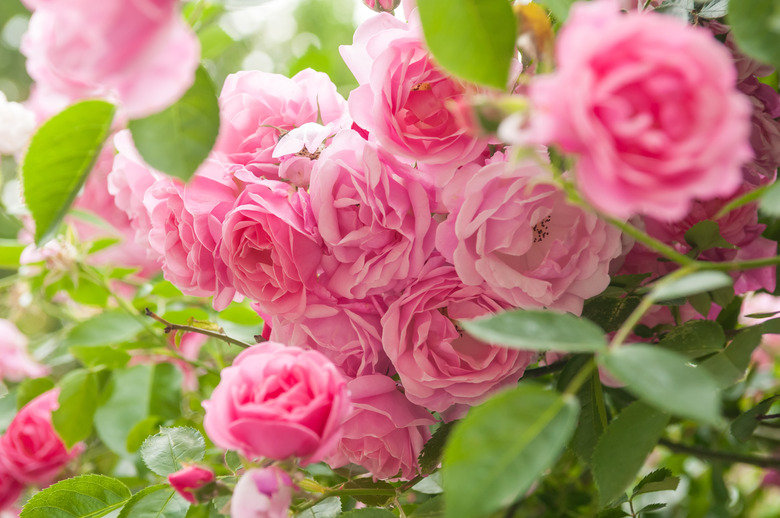When To Plant Rose Bushes In Zone 8
Roses (Rosa spp.) bloom throughout much of the United States, and these beautiful plants are popular perennials. The best time to plant them varies according to where you live, but if you live in U.S. Department of Agriculture hardiness zone 8, you can plant roses as early as January.
Roses in Zone 8
Gardeners who live in zone 8 have an advantage over many rose growers across the U.S. Zone 8 provides enough warmth to grow most varieties of roses without freeze damage, and it also provides just enough winter cold to grow some antique rose varieties that need a bit of chill to encourage flowering.
USDA zone 8 stretches from the North Carolina coast south to Georgia and the Florida Panhandle and heads due west to Texas, southern New Mexico and a swath of Arizona as well as portions of California and the coast of Oregon and Washington. In zone 8a, it rarely gets colder than 10 to 15 degrees, while zone 8b bottoms out at about 15 to 20 degrees.
In zone 8, an excellent time to plant bareroot roses is January or February. Just make sure you don't plant when the ground is frozen. Planting roses in January or February before they bloom will help your roses establish roots so that when the plant begins the work of blooming, the roots will be more established and better able to sustain plant health. Waiting to plant roses when the plant is blooming means not only does it have to adapt to new soil but produce flowers at the same time, which is a lot of work.
Tips for Planting Roses
Even if you don't see roses in nurseries in winter, you can mail order them. Many nurseries do begin to get a supply of roses in January, however, so you may have more from which to choose than if you wait until the roses bloom. Have a sturdy pair of gloves handy for planting.
Plant your rose where it will receive a minimum of five to six hours of sunlight each day. Morning sun is good because it helps to dry the leaves from dew and irrigation, which can help prevent diseases. Afternoon sun in many parts of zone 8 may scorch your blooms, so try to pick a spot with a bit of afternoon shade. Choose a spot in well-draining soil that still allows the roots to absorb water.
If you have hard-packed clay soil, dig a hole twice as wide as the roots. Make sure the soil is loose and loamy before planting. If planting from a container, loosen the roots and plant. If planting from a bare root, soak it in a bucket of water for eight to 12 hours before planting. Water thoroughly and mulch your newly planted rose to protect it while it adjusts to its new surroundings.
Caring for Your Roses
Make sure you space roses far enough apart to give them breathing room. Keep your roses watered. If the summer is dry, make sure you water twice a week but don't allow the plant to drown in water. Soak the entire root zone each time you water.
Add a 2- to 4-inch layer of shredded pine bark mulch around the plant, taking care to leave about an inch of space around the base stem of the rose. Fertilize the plants with an organic rose fertilizer according to package directions. If your soil is a bit on the alkaline side, you should consider an additive that will make your soil more acidic.
Deadhead your roses after the flowers have bloomed. In early spring, which may be February or March in zone 8, prune your roses. Each fall, clean away diseased canes and mulch your plants after the first frost but before the ground freezes.
References
- Summer Winds Nursery: Winter Is the BEST Time to Plant Roses in the Valley of the Sun
- The Old Farmer's Almanac: Growing Roses
- David Austin Roses: The Basics of Growing Roses
- USDA Agricultural Research Service: USDA Plant Hardiness Zone Map
- Rogue Valley Roses: Zone Hardiness Information
- Wilson Bros Gardens: USDA Plant Hardiness Zones Map
